Ditapis dengan
E-book The Land Is Our Community : Aldo Leopold’s Environmental Ethic for t…
his is a book about Aldo Leopold’s land ethic,1 a view he developed over the course of his lifetime, a view that was informed by his experiences as a hunter, forester, wildlife manager, ecologist, con-servationist, and professor. It culminated in the essay “The Land Ethic” in A Sand County Almanac, published posthumously after his untimely death at age sixty-one in 1948. It has been extre…
- Edisi
- -
- ISBN/ISSN
- 9780226834474
- Deskripsi Fisik
- 198 hlm
- Judul Seri
- -
- No. Panggil
- 155.9 MIL t
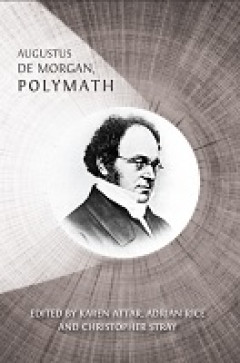
E-book Augustus De Morgan, Polymath: New Perspectives on his Life and Legacy
When Augustus De Morgan died in 1871, he was described as ‘one of the profoundest mathematicians in the United Kingdom’ and even as ‘the greatest of our mathematicians’. But he was far more than just a mathematician. Because much of his voluminous written output on various subjects was scattered throughout journals and encyclopaedias, the breadth of his interests and contributions has b…
- Edisi
- -
- ISBN/ISSN
- 9781805113263
- Deskripsi Fisik
- 388 halaman, ilus.
- Judul Seri
- -
- No. Panggil
- 925 ATT a
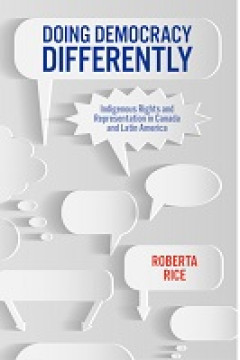
E-book Doing Democracy Differently: Indigenous Rights and Representation in C…
Across North and South America, Indigenous people play a dual political role, building self-governing structures in their own nations and participating in the elections of settler states. Doing Democracy Differently asks how states are responding to demands for Indigenous representation and autonomy and in what ways the ongoing project of decolonization may unsettle the practice of democracy. B…
- Edisi
- -
- ISBN/ISSN
- 9781773855646
- Deskripsi Fisik
- 163 halaman
- Judul Seri
- -
- No. Panggil
- 321.8 RIC d
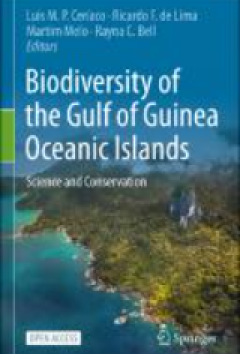
E-book Biodiversity of the Gulf of Guinea Oceanic Islands : Science and Conse…
The Portuguese explorer Francisco Newton was one of thefirst naturalists todedicate almost one decade to the study of the outstanding diversity of the Gulf ofGuinea oceanic islands. The collections he made, in what was largely unexploredterritory for science, allowed the description of dozens of new species and began toreveal intriguing biogeographic patterns. Gazing at the species he was colle…
- Edisi
- -
- ISBN/ISSN
- 9783031061530
- Deskripsi Fisik
- 707 hlm
- Judul Seri
- -
- No. Panggil
- 577 ALM b

E-book Environment Impact on Reproductive Health : A Translational Approach
The new concept of health, developed in the recent years, considers the person’s well-being more heterogeneously. A new model that considers the relationship between human health and the environment has strongly emerged during the last three decades. Our state of well-being is continually threatened by a series of internal and external disturbin…
- Edisi
- -
- ISBN/ISSN
- 9783031364945
- Deskripsi Fisik
- 242 hlm
- Judul Seri
- -
- No. Panggil
- 612.6 CAS e
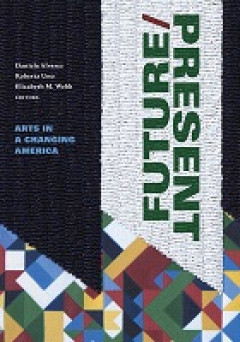
E-book FUTURE/PRESENT: Arts in a Changing America
Building on five years of national organizing by Arts in a Changing America, an artist-led initiative that challenges structural racism in the art world, FUTURE/PRESENT includes a range of poetry, essays and criticism, visual and performance art, artist manifestos, interviews, and reflections on community practice.
- Edisi
- -
- ISBN/ISSN
- 9781478025160
- Deskripsi Fisik
- 569 halaman
- Judul Seri
- -
- No. Panggil
- 807 ALV f
E-book Rice Ratooning
Rice is cultivated in tropical Asia (South and Southeast Asia) over an area of about 88.7 million ha, with an annual total production of nearly 183.8 million tons of rough rice, an average productivity of 2.7 t/ha (Table 1). Only 14% of the rice area in tropical Asia supports 2 crops of rice per year under irrigation. The remaining riceland is entirely rainfed, with varying water regimes. In ar…
- Edisi
- -
- ISBN/ISSN
- 9711041901
- Deskripsi Fisik
- 288 hlm
- Judul Seri
- -
- No. Panggil
- 664.7 IRR r
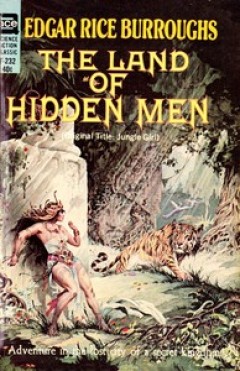
E-Book The Land of Hidden Men
"'There are other things deep in the jungle, my lord, that no man may look upon and live.' "'What, for example?' demanded King. "'The ghosts of my ancestors,' answered the Cambodian, 'the Khmers who dwelt here in great cities ages ago. Within the dark shadows of the jungle the ruins of their cities still stand, and down the dark aisles of the forest pass the ancient kings and warriors and lit…
- Edisi
- -
- ISBN/ISSN
- 70536
- Deskripsi Fisik
- -
- Judul Seri
- -
- No. Panggil
- 823 BUR t
E-book Tree Book: learning to recognize frees of British Columbia
The first few pages of the Tree Book give you some tips on how to identify trees. Once you are familiar with the identifying features, turn to the identillcation keys and narrow your choices. To help you locate trees in the book, the colour used in the key for grouping trees with sinlilar features is the same as the coloured background in the upper right corner of the second page for each tree …
- Edisi
- 2nd ed.
- ISBN/ISSN
- 0772621594
- Deskripsi Fisik
- 196 hlm
- Judul Seri
- -
- No. Panggil
- 635.977 PAR t
E-book The outlaw of torn
Here is a story that has lain dormant for seven hundred years. At first it was suppressed by one of the Plantagenet kings of England. Later it was forgotten. I happened to dig it up by accident. The accident being the relationship of my wife's cousin to a certain Father Superior in a very ancient monastery in Europe. He let me pry about among a quantity of mildewed and musty manuscripts an…
- Edisi
- -
- ISBN/ISSN
- -
- Deskripsi Fisik
- 284 hlm; 0.4 mb
- Judul Seri
- -
- No. Panggil
- 823 BUR t
E-book The beasts of tarzan
"The entire affair is shrouded in mystery," said D'Arnot. "I have it on the best of authority that neither the police nor the special agents of the general staff have the faintest conception of how it was accomplished. All they know, all that anyone knows, is that Nikolas Rokoff has escaped." John Clayton, Lord Greystoke--he who had been "Tarzan of the Apes"--sat in silence in the apartm…
- Edisi
- -
- ISBN/ISSN
- -
- Deskripsi Fisik
- 299 hlm; 0.4 mb
- Judul Seri
- -
- No. Panggil
- 823 BUR t
E-book The chessmen of mars
Shea had just beaten me at chess, as usual, and, also as usual, I had gleaned what questionable satisfaction I might by twitting him with this indication of failing mentality by calling his attention to the nth time to that theory, propounded by certain scientists, which is based upon the assertion that phenomenal chess players are always found to be from the ranks of children under twelve…
- Edisi
- -
- ISBN/ISSN
- -
- Deskripsi Fisik
- 382 hlm; 0.6 mb
- Judul Seri
- -
- No. Panggil
- 823 BUR t
E-book Tarzan and the jewels of opar
Lieutenant Albert Werper had only the prestige of the name he had dishonored to thank for his narrow escape from being cashiered. At first he had been humbly thankful, too, that they had sent him to this Godforsaken Congo post instead of court-martialing him, as he had so justly deserved; but now six months of the monotony, the frightful isolation and the loneliness had wrought a change. T…
- Edisi
- -
- ISBN/ISSN
- -
- Deskripsi Fisik
- 288 hlm, 0.4 mb
- Judul Seri
- -
- No. Panggil
- 823 BUR t
E-book A princess of mars
He seemed always to be laughing; and he entered into the sports of the children with the same hearty good fellowship he displayed toward those pastimes in which the men and women of his own age indulged; or he would sit for an hour at a time entertaining my old grandmother with stories of his strange, wild life in all parts of the world. We all loved him, and our slaves fairly worshipped t…
- Edisi
- -
- ISBN/ISSN
- -
- Deskripsi Fisik
- 282 hlm, 0.4 mb
- Judul Seri
- -
- No. Panggil
- 823 BUR a
E-book Tarzan of the apes
I had this story from one who had no business to tell it to me, or to any other. I may credit the seductive influence of an old vintage upon the narrator for the beginning of it, and my own skeptical incredulity during the days that followed for the balance of the strange tale. When my convivial host discovered that he had told me so much, and that I was prone to doubtfulness, his foolish prid…
- Edisi
- -
- ISBN/ISSN
- -
- Deskripsi Fisik
- 342 hlm
- Judul Seri
- -
- No. Panggil
- 823 BUR t

Kristus Tuhan: Jalan menuju Kana.
- Edisi
- cet. 1
- ISBN/ISSN
- 978-979-22-4159
- Deskripsi Fisik
- 304 hlm;13,5 x 20 cm
- Judul Seri
- -
- No. Panggil
- 232.9 RIC k
- Edisi
- cet. 1
- ISBN/ISSN
- 978-979-22-4159
- Deskripsi Fisik
- 304 hlm;13,5 x 20 cm
- Judul Seri
- -
- No. Panggil
- 232.9 RIC k

Computer security
- Edisi
- 1th edition
- ISBN/ISSN
- 0809456702
- Deskripsi Fisik
- 128 Pgs.; illus. 23,5 x 28 cm
- Judul Seri
- Understanding computers
- No. Panggil
- 005.8 CON c
- Edisi
- 1th edition
- ISBN/ISSN
- 0809456702
- Deskripsi Fisik
- 128 Pgs.; illus. 23,5 x 28 cm
- Judul Seri
- Understanding computers
- No. Panggil
- 005.8 CON c

Artificial intelligence
- Edisi
- 1th edition
- ISBN/ISSN
- 0809456753
- Deskripsi Fisik
- 128 Pgs.; illus. 23,5 x 28 cm
- Judul Seri
- Understanding computer
- No. Panggil
- 006.3 CON a
- Edisi
- 1th edition
- ISBN/ISSN
- 0809456753
- Deskripsi Fisik
- 128 Pgs.; illus. 23,5 x 28 cm
- Judul Seri
- Understanding computer
- No. Panggil
- 006.3 CON a

Computer basics
- Edisi
- 1th edition
- ISBN/ISSN
- 0809456540
- Deskripsi Fisik
- 128 Pgs.; illus. 23,5 x 28 cm
- Judul Seri
- Understanding coputers
- No. Panggil
- 001.64 CON c
- Edisi
- 1th edition
- ISBN/ISSN
- 0809456540
- Deskripsi Fisik
- 128 Pgs.; illus. 23,5 x 28 cm
- Judul Seri
- Understanding coputers
- No. Panggil
- 001.64 CON c

Input/output
- Edisi
- 1th edition
- ISBN/ISSN
- 0809456664
- Deskripsi Fisik
- 128 Pgs.; illus. 23,5 x 28 cm
- Judul Seri
- -
- No. Panggil
- 004 CON i
- Edisi
- 1th edition
- ISBN/ISSN
- 0809456664
- Deskripsi Fisik
- 128 Pgs.; illus. 23,5 x 28 cm
- Judul Seri
- -
- No. Panggil
- 004 CON i

Computer images
- Edisi
- 1th edition
- ISBN/ISSN
- 0809456621
- Deskripsi Fisik
- 128 Pgs.; illus. 23,5 x 28 cm
- Judul Seri
- Understanding computers
- No. Panggil
- 006.6 CON c
- Edisi
- 1th edition
- ISBN/ISSN
- 0809456621
- Deskripsi Fisik
- 128 Pgs.; illus. 23,5 x 28 cm
- Judul Seri
- Understanding computers
- No. Panggil
- 006.6 CON c

Communications
- Edisi
- 1th edition
- ISBN/ISSN
- 0809457008
- Deskripsi Fisik
- 128 Pgs.; illus. 23,5 x 28 cm
- Judul Seri
- Understanding computers
- No. Panggil
- 384.3 CON c
- Edisi
- 1th edition
- ISBN/ISSN
- 0809457008
- Deskripsi Fisik
- 128 Pgs.; illus. 23,5 x 28 cm
- Judul Seri
- Understanding computers
- No. Panggil
- 384.3 CON c

The Book of art - Origins of westrn Art : A pictorial encyclopedia of paintin…
Quality set Printed in Italy, this set features gold leaf page edges, good paper, and lush illustrations. Front cover quote "The Book of Art Set is designed as an intro to the visual arts: painting, drawing, and sculpture. It provides a comprehensive survey, in 10 volumes of one of the most creative aspects of human effort, especially organized for the reader who does not have an extensive know…
- Edisi
- 4th edition
- ISBN/ISSN
- -
- Deskripsi Fisik
- 416 pg.; illus. 21 x 25 cm
- Judul Seri
- -
- No. Panggil
- 703 DON t

LOVE: Clasic Stories
- Edisi
- cet. 1
- ISBN/ISSN
- 0-582-46578-8
- Deskripsi Fisik
- 85 page;13 x 20 cm
- Judul Seri
- -
- No. Panggil
- 823 RIC l
- Edisi
- cet. 1
- ISBN/ISSN
- 0-582-46578-8
- Deskripsi Fisik
- 85 page;13 x 20 cm
- Judul Seri
- -
- No. Panggil
- 823 RIC l
 Karya Umum
Karya Umum  Filsafat
Filsafat  Agama
Agama  Ilmu-ilmu Sosial
Ilmu-ilmu Sosial  Bahasa
Bahasa  Ilmu-ilmu Murni
Ilmu-ilmu Murni  Ilmu-ilmu Terapan
Ilmu-ilmu Terapan  Kesenian, Hiburan, dan Olahraga
Kesenian, Hiburan, dan Olahraga  Kesusastraan
Kesusastraan  Geografi dan Sejarah
Geografi dan Sejarah